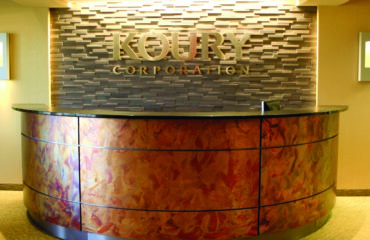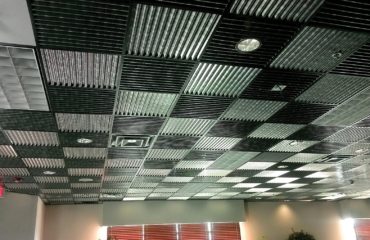How to Mix Metals Like a Pro in Every Interior
In contemporary design, many rules of the past have proven that they are meant to be broken. Many interior designers are now emboldened to mix and match different metals. For those among us who are accustomed to making every metal accent the same, the idea of mixing two or three metals can be intimidating. Luckily, there are some simple rules that will make following this trend easy and effortless. Whether you’re a DIY-er or a design pro, you can achieve this svelte, sophisticated look in any application.
Choose Your Primary Hues
The first step with any mixed metal application is to choose 2 to 3 primary hues. One of these hues will be dominant, while the other(s) will be secondary accents. The ratio of your metals is especially important. You don’t want to use each metal equally. Instead, use any secondary hues sparingly to make a bigger impact. When selecting your metals, consider their characteristics. For example:
- Nickel pairs well with brass and gold because these finishes each have warm undertones. Chrome might not work as well with brass because chrome has cool undertones.
- Rose gold has a warm undertone, but still pairs well with chrome because both share highly reflective qualities. Texture and sheen can be as unifying as color when mixing metals.
- Black is a “neutral” finish that pairs well with everything. This finish can bring any room together, but pairs especially well with rustic coppers.

Green Valley Grill | Antique Copper Ore C431 (NuMetal, Copper Collection)
Focus on Horizontal Visual Planes
Now that you’ve established which metals you’d like to use, what’s the best way to distribute them across your space? A good way to think about distribution is to break your room down into horizontal planes. Breaking your room down this way is an easy way to keep your space looking uniform.

Residential Kitchen | Celestial + Oil Rubbed Bronze (MirroFlex)
For example, say you are renovating your kitchen. You could easily break down your planes into lighting, cabinet and sink hardware, and kitchen backsplash. Your cabinet and sink hardware would be the primary hue, while lighting and backsplash would be secondary hues. For example, take this client’s home installation of antique bronze cabinet hardware, MirroFlex backsplash in Moonstone Copper, and stainless steel appliances. Each of these 3 finishes is balanced with the rest. While this distribution example isn’t a hard and fast rule, following this guidance can quickly put you on a path to success.

Residential Kitchen | Savannah + Moonstone Copper (MirroFlex)
Explore Textures and Finishes
Gone are the days where homeowners and retailers were limited to matte and polished finishes. Today’s metals come in a variety of textures and sheens. Brushed, burnished, antiqued, hand-swirled, oiled, hammered, and even pebbled metals and patinas are readily available. This means that it’s easier than ever to combine the same color metal in different textures, or mix-and-match both color and texture for ultimate personalization.

Retail Display | Funky Cold Patina + Pebble Aluminum (Fusion, Artful Metals Collection)
For example, take the store display above. The pebbled aluminum texture may not seem like an ideal pairing for minimalist chrome, but the two work together because of their differences. These two work especially well together because they share cool undertones. However, what really makes this display “pop” is the contrast between ultra-clean chrome and rough, pebbled aluminum. Mixing and matching textures can be the secret key to standing out from the crowd.
Put the Pedal to the Metal
Mixing metals may seem like 2018’s most daunting trend, but anyone can pull it off with a few simple tips. When done carefully, mixed metals are the perfect way to give your space an eclectic, curated feel. What’s more, mixing colors and finishes will give your space’s design longevity. Color and finish trends come and go, but by mixing it up, you can rise above the trends and stay fresh. Whether you’re remodeling a kitchen, a retail space, or a restaurant concept, that’s music to your ears.
Ready to explore your options? ATI Laminates has a variety of substrates to help you achieve the perfect mixed-metals interior. Speak with an ATI representative today to learn which ATI solution is right for you.




